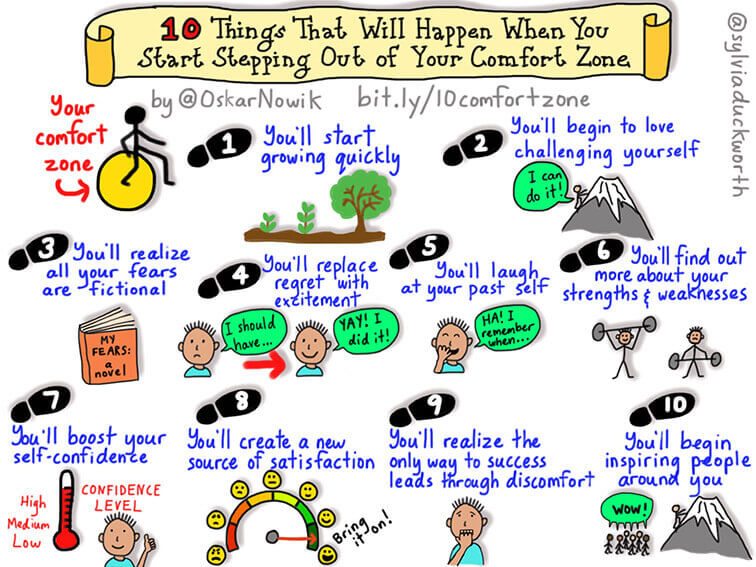
What Happens When Teachers Step Out of Their Comfort Zones?
by TeachThought Staff
What happens when, as a teacher, you step out of your comfort zone?
We’ve talked in the past about what happens when teachers connect, but that doesn’t necessarily require a teacher to push past their usual habits and routines. Much like adopting a growth mindset, valuing the act of pushing past what you “like to do” can, in the right circumstance, result in growth.
Education’s resident colorful sketchnoter Sylvia Duckworth took Oskar Nowik’s thoughts on the benefits of stepping out of your comfort zone and, true to form, created a graphic. While perhaps a bit optimistic in places (e.g., “When you start stepping out of your comfort zone, you’ll realize all of your fears are fictional,” or “When you start stepping out of your comfort zone, you’ll realize the only way to success leads through discomfort”), the idea of growth through change absolutely has a place in mindset of a progressive educator.
We, as educators, face countless opportunities on a daily basis to change, but not all change is growth. The Most Dangerous Phrase In Education makes a powerful point, and itself implies the necessity of adaptation. The key? Being able to separate instincts honed from years of experience, and dogma-fueled fears that need pushing past.
10 Things That Happen When You Start Stepping Out Of Your Comfort Zone
1. You’ll start growing quickly.
2. You’ll begin to love challenging yourself
3. You’ll realize all of your fears are fictional
4. You’ll replace regret with excitement
5. You’ll laugh at your past self.
6. You’ll find out more about your own strengths and weaknesses.
7. You’ll boost your self-confidence.
8. You’ll create a new source of satisfaction
9. You’ll realize the only way to success leads through discomfort
10. You’ll begin inspiring the people around you.
What Happens When You Start Stepping Out Of Your Comfort Zone; image attribution flickr user sylviaduckworth